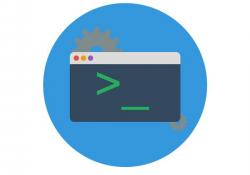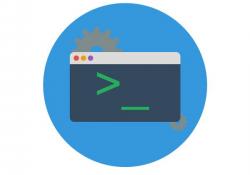Command-Line Tip: Put Down the Pipe

Learn a few techniques for avoiding the pipe and making your command-line commands more efficient.
Anyone who uses the command line would acknowledge how powerful the pipe is. Because of the pipe, you can take the output from one command and feed it to another command as input. What's more, you can chain one command after another until you have exactly the output you want.
Pipes are powerful, but people also tend to overuse them. Although it's not necessarily wrong to do so, and it may not even be less efficient, it does make your commands more complicated. More important though, it also wastes keystrokes! Here I highlight a few examples where pipes are commonly used but aren't necessary.
Stop Putting Your Cat in Your Pipe
One of the most common overuses of the pipe is in conjunction with
cat. The cat command concatenates multiple files from input into a
single output, but it has become the overworked workhorse for piped
commands. You often will find people using cat just to output the
contents of a single file so they can feed it into a pipe. Here's
the most common example:
cat file | grep "foo"
Far too often, if people want to find out whether a file contains a
particular pattern, they'll cat the file piped into a grep command.
This works, but grep can take a filename as an argument directly,
so you can replace the above command with:
grep "foo" file
The next most common overuse of cat is when you want to sort the
output from one or more files:
cat file1 file2 | sort | uniq
Like with grep, sort supports multiple files as arguments, so you
can replace the above with:
sort file1 file2 | uniq
In general, every time you find yourself catting a file into a pipe,
re-examine the piped command and see whether it can accept files directly
as input first either as direct arguments or as STDIN redirection.
For instance, both sort and grep can accept files as arguments as
you saw earlier, but if they couldn't, you could achieve the same
thing with redirection:
sort < file1 file2 | uniq
grep "foo" < file
Remove Files without xargs
The xargs command is very powerful on the command line—in particular,
when piped to from the find command. Often you'll use the find
command to pick out files that have a certain criteria. Once you
have identified those files, you naturally want to pipe that output
to some command to operate on them. What you'll eventually discover
is that commands often have upper limits on the number of arguments
they can accept.
So for instance, if you wanted to perform the somewhat dangerous operation of finding and removing all of the files under a directory that match a certain pattern (say, all mp3s), you might be tempted to do something like this:
find ./ -name "*.mp3" -type f -print0 | rm -f
Of course, you should never directly pipe a find command to remove.
First, you should always pipe to echo to ensure that the files you
are about to delete are the ones you want to delete:
find ./ -name "*.mp3" -type f -print0 | echo
If you have a lot of files that match the pattern, you'll probably
get an error about the number of arguments on the command line, and
this is where xargs normally comes in:
find ./ -name "*.mp3" -type f -print0 | xargs echo
find ./ -name "*.mp3" -type f -print0 | xargs rm -f
This is better, but if you want to delete files, you don't need to
use a pipe at all. Instead, first just use the find command without
a piped command to see what files would be deleted:
find ./ -name '*.mp3" -type f
Then take advantage of find's -delete argument to delete them without
piping to another command:
find ./ -name '*.mp3" -type f -delete
So next time you find your pinky finger stretching for the pipe key, pause for a second and think about whether you can combine two commands into one. Your efficiency and poor overworked pinky finger (whoever thought it made sense for the pinky to have the heaviest workload on a keyboard?) will thank you.












